Specialist
At the beginning of the 20th century, Archbishop Bourne (later Cardinal Bourne) established a home in south London for 25 boys crippled by tuberculosis or polio. By 1906, however, funds had almost run out and the home was in jeopardy. Fortunately an old coaching inn in Clapham was found in 1907 and the home moved there. The Sisters of Charity of the Order of St Vincent de Paul agreed to run it and the home became the St Vincent's Home for Crippled Boys.
In 1910 an orthopaedic surgeon, Mr McCrae Aitken, visited the Home and treated 19 of the children. Within three years these boys were able to earn their own living.
The work increased and in 1912 the charity took over a private house - Eastcote in Wiltshire Lane, Pinner - at the northern end of Park Wood. The Home was renamed the Eastcote Cripples Home. The ethos of the establishment continued, however - to provide curative treatment, an elementary education and instruction in a trade to enable the boys to find work.
Originally the Home had 100 beds housed in wooden huts (these were replaced by brick buildings in the 1930s). The Home supplied its own milk, poultry, fruit and vegetables from 60 acres of farm and gardens.
In 1923 an operating theatre was built and a Physiotherapy Department added. The Home became St Vincent's Orthopaedic Hospital. Most patients suffered from tuberculosis of joints (hip, spine, knee and ankle), osteomyelitis, polio, scoliosis, congenital dislocation of the hip and congenital foot disorders, such as club foot.
In 1925 a 20-bedded ward was added for girls and, in 1930, a further ward was opened for 25 patients.
During WW2 the Hospital was designated a Class 1A Casualty Hospital under the Emergency Hospital Scheme, and adults were admitted for the first time as air-raid and service casualities. By now the Hospital had 219 beds, 75 of which were designated for the Emergency Medical Service. As in most hospitals during the war, there was a severe shortage of medical and nursing staff. In 1940 the Hospital chapel was destroyed by bombing (it was later rebuilt in 1962).
As treatments improved and drug treatments became more effective, the average length of stay fell to 126 days; before the war it had been 308 days. During their stay in hospital, patients attended workshops and received instruction in engineering, boot making, tailoring and carpentry, in preparation for joining the workforce when they were discharged.
The Hospital did not join the NHS in 1948 but remained independent. In 1962 it had 164 beds.
Towards the end of the 20th century the nature of its work changed. Orthopaedic surgery was being phased out, although joint replacements were still carried out. The emphasis moved to providing nursing care for the young chronically disabled, and patients with multiple sclerosis , brain injuries or stroke. Ninety-eight percent of the work was caring for NHS patients.
In 1996 the word 'Orthopaedic' was dropped from its name and it became St Vincent's Hospital.
In 1997 the Templeton Centre, a specialist day centre for patients with Alzheimer's disease, opened to provide assistance and facilities for patients and their carers.
Orthopaedic surgery finally ceased in 1998, when a change in government policy decreed that NHS patients should be treated, where possible, only in NHS hospitals. St Vincent's Hospital, although a charitable institution, was considered a non-NHS hospital. Orthopaedic patients were therefore referred to the nearby Mount Vernon Hospital, which paradoxically was in the process of reducing its surgical work.
At St Vincent's Hospital 48 members of staff were made redundant and only two wards remained open, providing rehabilitation services for orthopaedic and trauma patients from Northwick Park Hospital. The busy Physiotherapy Department continued to provide care for NHS patients from Hillingdon and Harrow, but the X-ray Department came under threat of closure.
In 2000 the Trustees decided to close the Hospital and to redevelop the site as a Nursing Home.
Present status (April 2008)
The Hospital buildings were demolished and the new £6m St Vincent's Nursing Home opened in 2006 on 3.7 acres of the remaining 18 acre site.
The rest of the Hospital land has been redeveloped for housing.
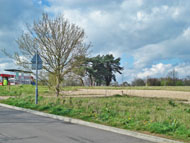
The site of St Vincent's Hospital is now a field.
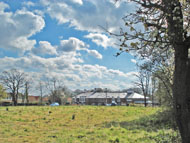
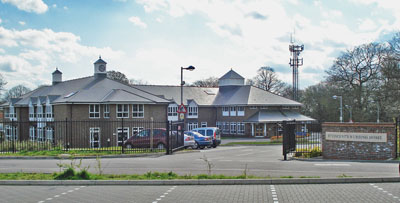
St Vincent's Nursing Home

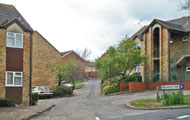
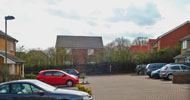
www.british-history.ac.uk
www.london.gov.uk
www.parliament.the-stationery-office.co.uk
www.publications.parliament.uk
www.svnh.co.uk
Return to home page